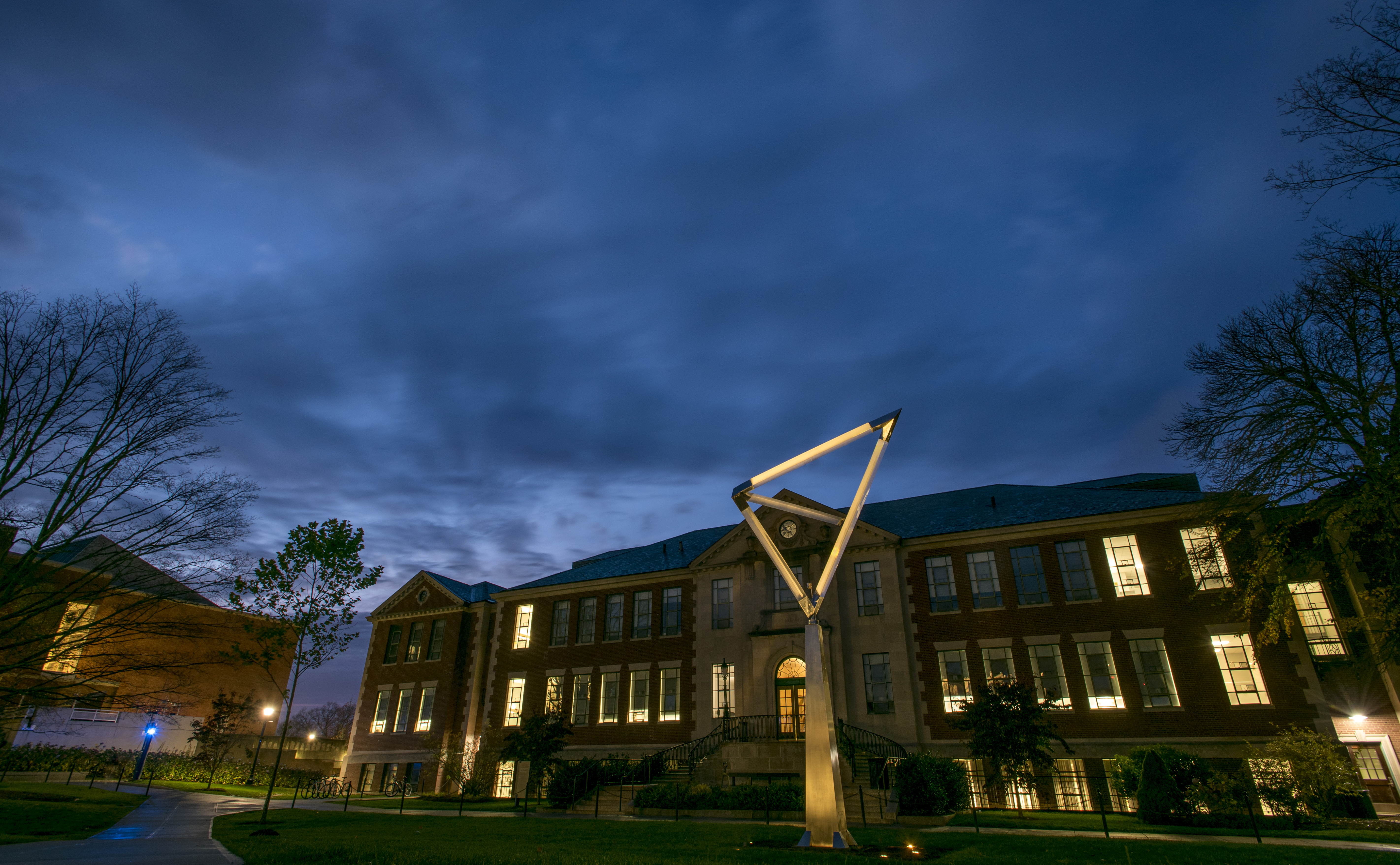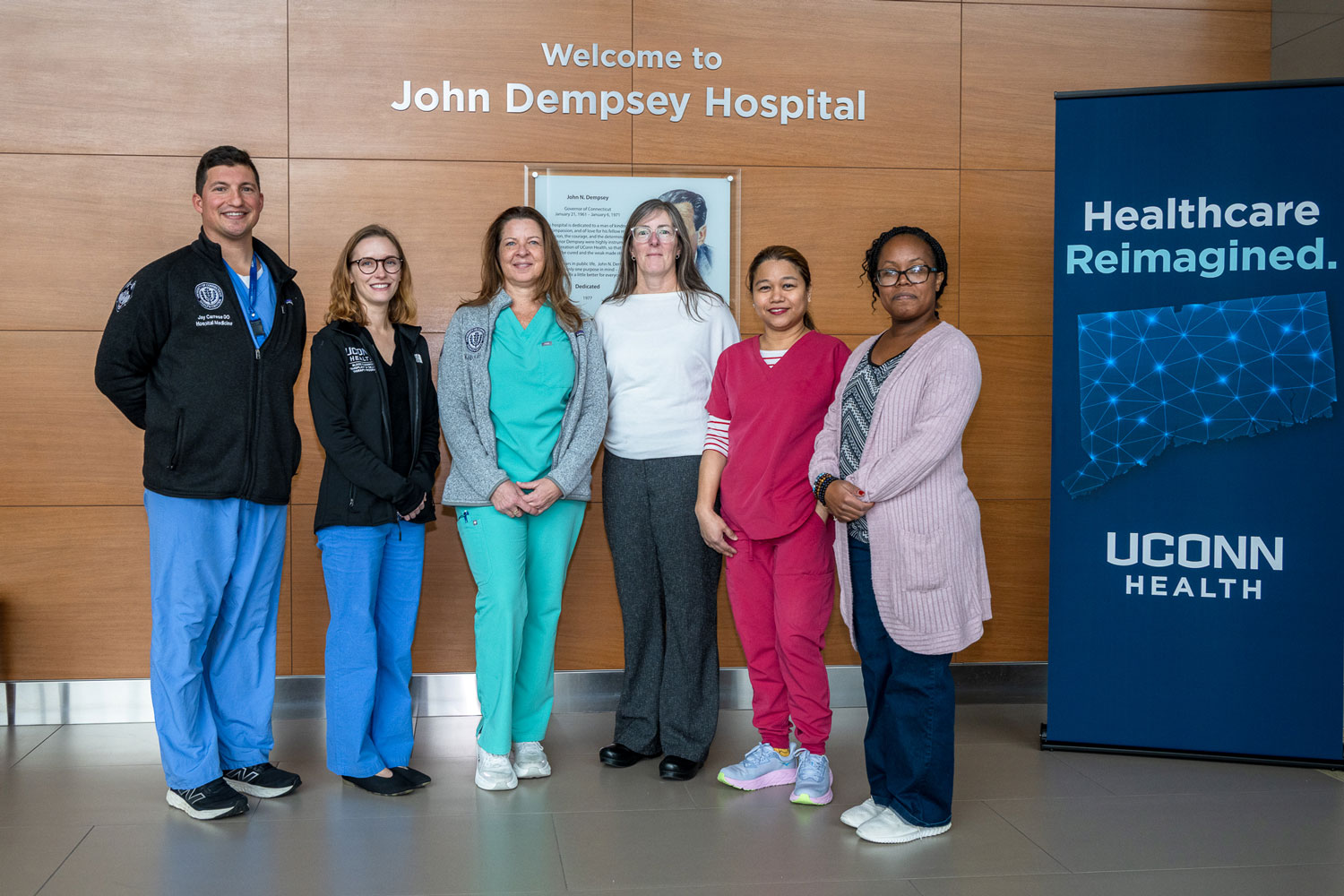Corporate sponsors helped many of the 160 projects on display at last Friday’s Senior Design Day. But one, a device to help disabled people to stand, was inspired by a handwritten note from a desperate mother.
Last year, Dr. Krystyna Gielo-Perczak (Department of Biomedical Engineering) and Dr. Shalabh Gupta (Department of Electrical and Computer Engineering) received a note from a Connecticut woman about her daughter, a UConn alumnus who was paralyzed on her left side after a car accident. The woman asked if their students would be able to design some kind of equipment that would help her daughter stand up and even walk.
So for the last year, their students – Rachelle Aekins (BME), Shaniel Bowen (BME), Evita Vigante (ECE) and James Yee (ECE) – got to work on a common project that they called the “Compact Sit -to- Stand Device,” a rehabilitation device designed to assist people who suffer from weakened or injured lower limbs. The object of the device is to help the user just enough that they still have to use their own muscles, and with repeated use, it helps strengthen the muscles and improve coordination. The base of the design is a lift jack that includes various electrical components to lift a patient from sitting to standing. The students used musculoskeletal modeling and computer-aided design to hone the device.
Evita Vigante fielded questions from passers-by in Gampel. A key to the design’s success, she said, is affordability.
“We would like to see this device go for somewhere around $200 to $300,” she said. When it could actually get to market, she said, is hard to tell. Because it’s such a new concept, she said, the FDA testing process would be necessarily comprehensive and could take a few years.
[metaslider id=20808]
Overall, the exhibits gave visitors a look at what certain technologies could look like in the near future. The event is the culmination of a yearlong project that all senior Engineering students take on, working with faculty and industry engineers to solve real-world engineering problems presented to them by company sponsors. Students learn about the principles of design, the ethics of engineering decisions, and how professionals communicate ideas. Judges evaluate projects, and cash prizes are awarded to the top teams.
More than 70 sponsors funded the projects, including corporations, a federal agency and UConn itself. Sponsors include Johnson & Johnson, United Technologies Aerospace Systems, Medtronic and Sikorsky Aircraft Corp. Projects represented a wide range of technological innovation: improvements to dental implants, better elevator brakes for extremely tall buildings, and a project that looks at how to make Mars habitable for humans, among them. Pretty much anyone who’s ever tried to park on campus should be grateful for “Park Shark” – an mobile phone app designed to help commuters navigate their way through the campus parking lots a little more easily, and get to class on time.
One team, made up of students Daniel Boudrea, Michael Johnson, and Nataliya Nechyporenko, devised an “Un-Crashable Helicopter.” With advisor Prof. Chengyu Cao, they made a scale model of a helicopter outfitted with range sensors, onboard gyroscopes and accelerometers that allow it to carry out automated maneuvers in cases of emergency.
Have you ever wondered what kind of safety hazards are posed by the flying debris from tornados near nuclear power plants? Students Jemma O’Donnell, Tyler Condon and Christopher Sarmiento-Salas are on the case. They developed computer modeling to simulate the velocities and impact of tornado-borne missiles. As it turns out, there are some risks. Westinghouse, which sponsored the project will use the data to better guard their at-risk plants.
(Photos by Chris LaRosa/UConn)



